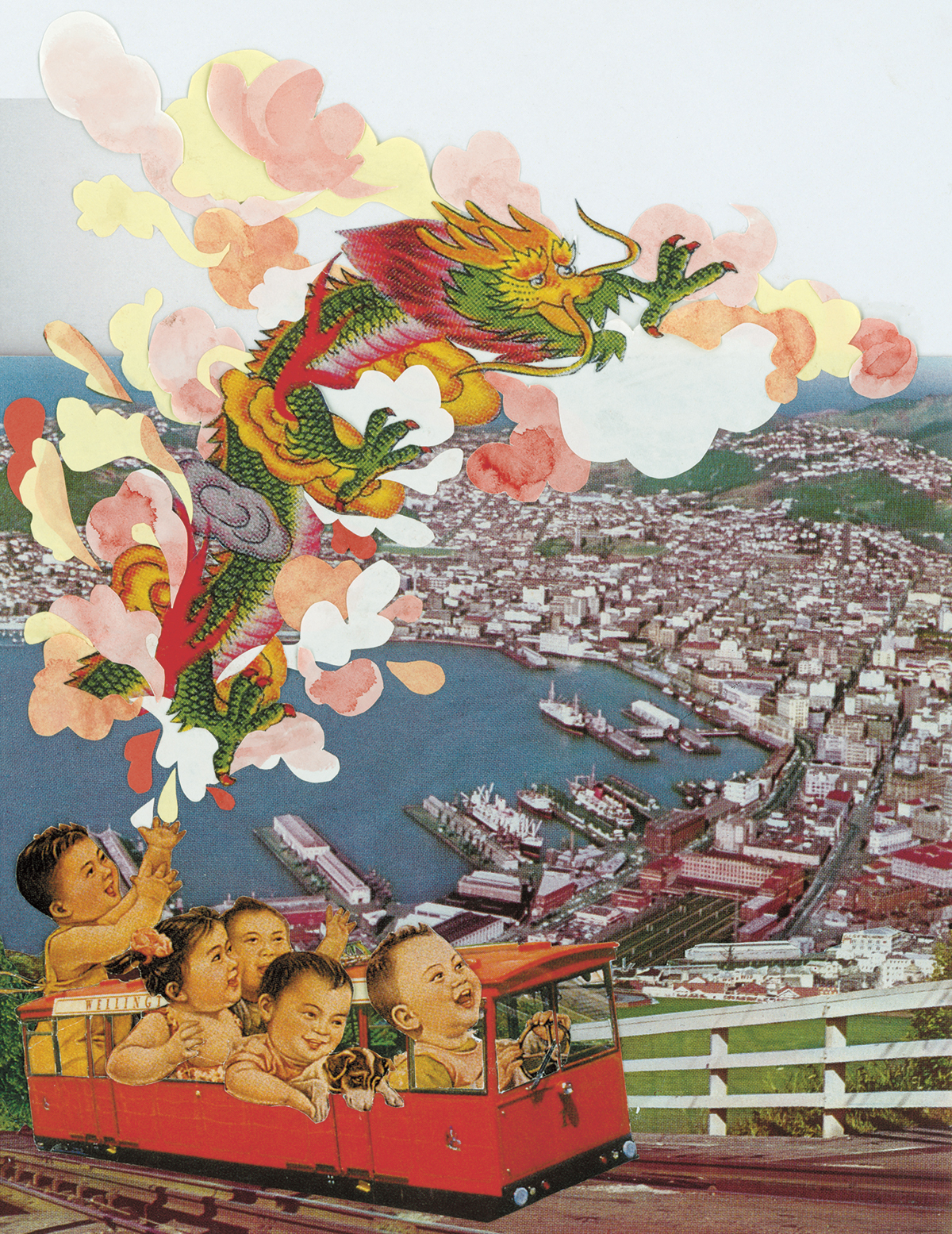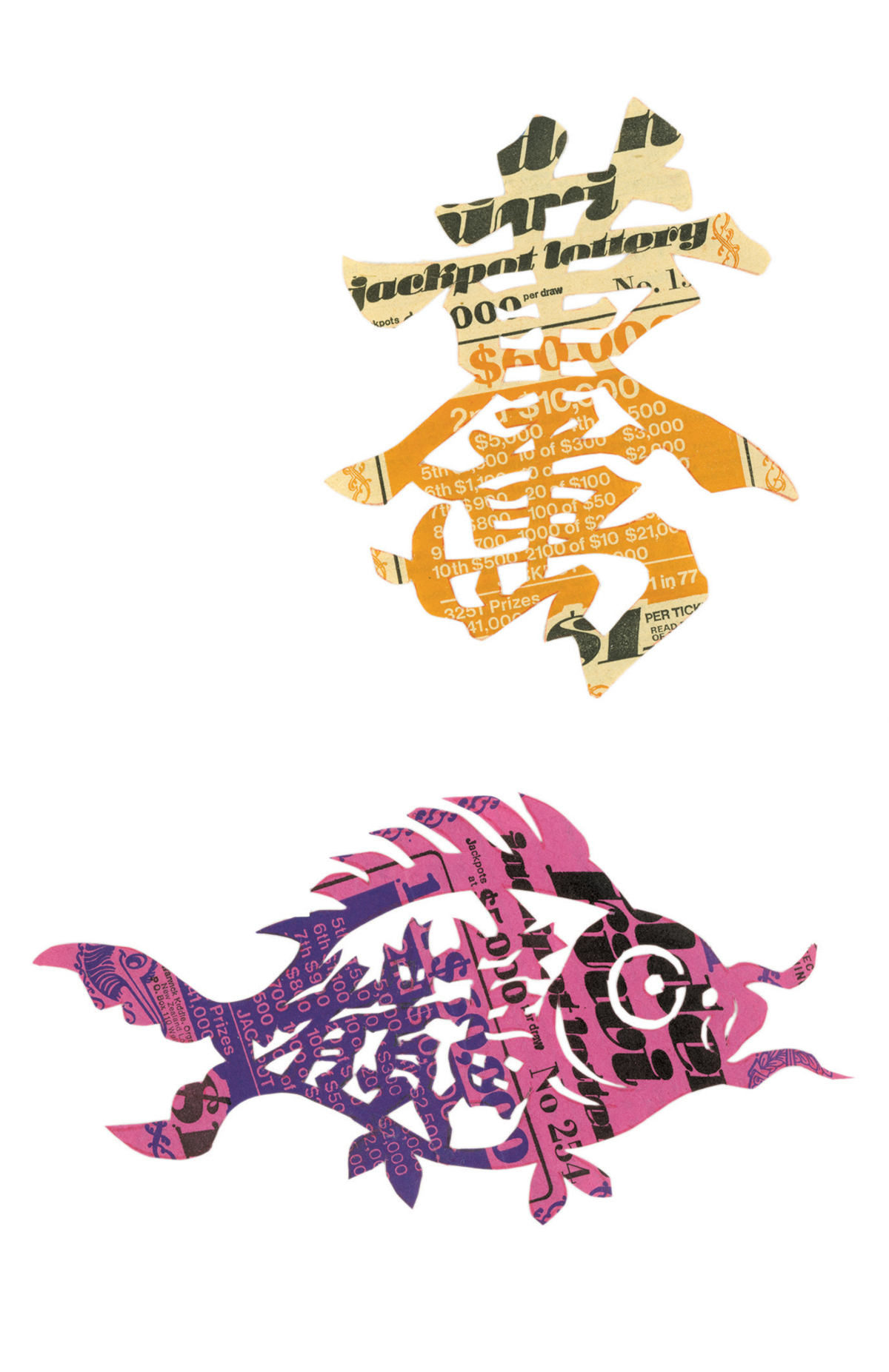Dream of the Skyland – Steve Kerr
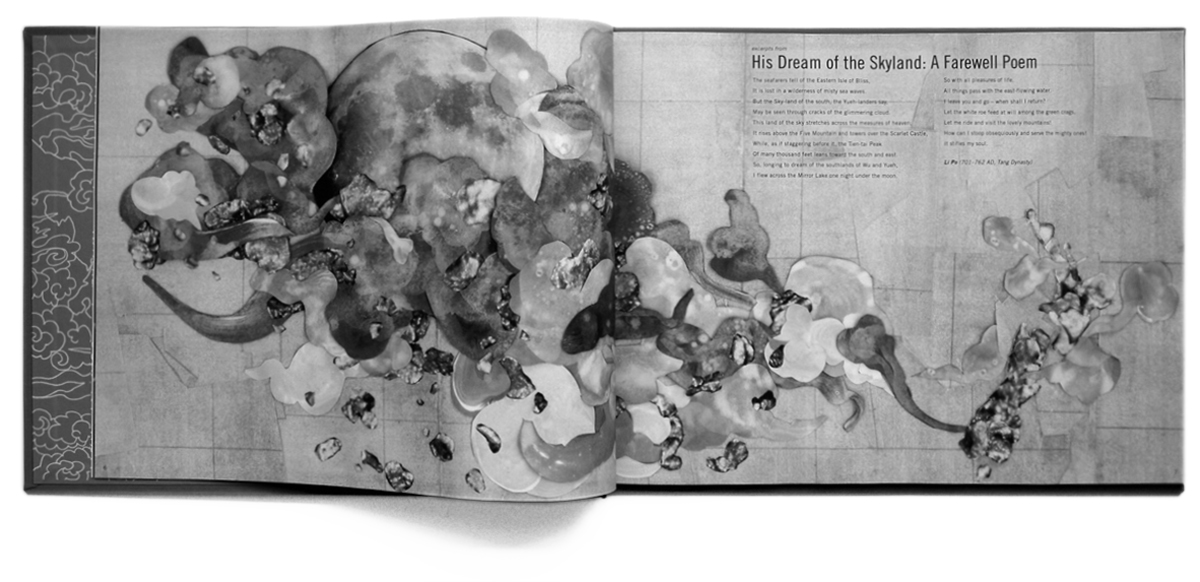
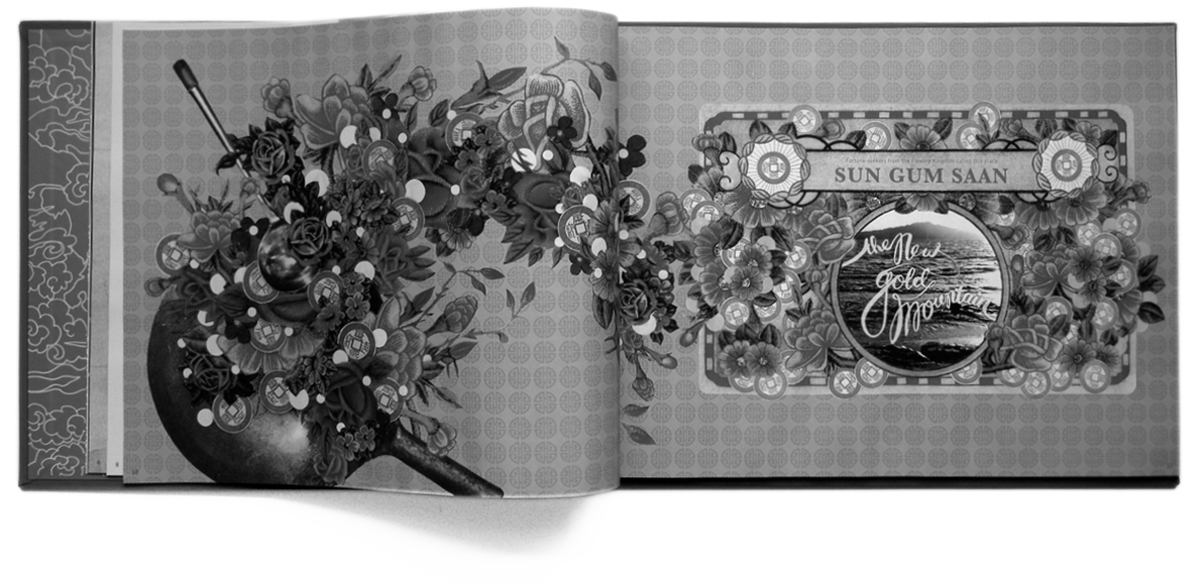
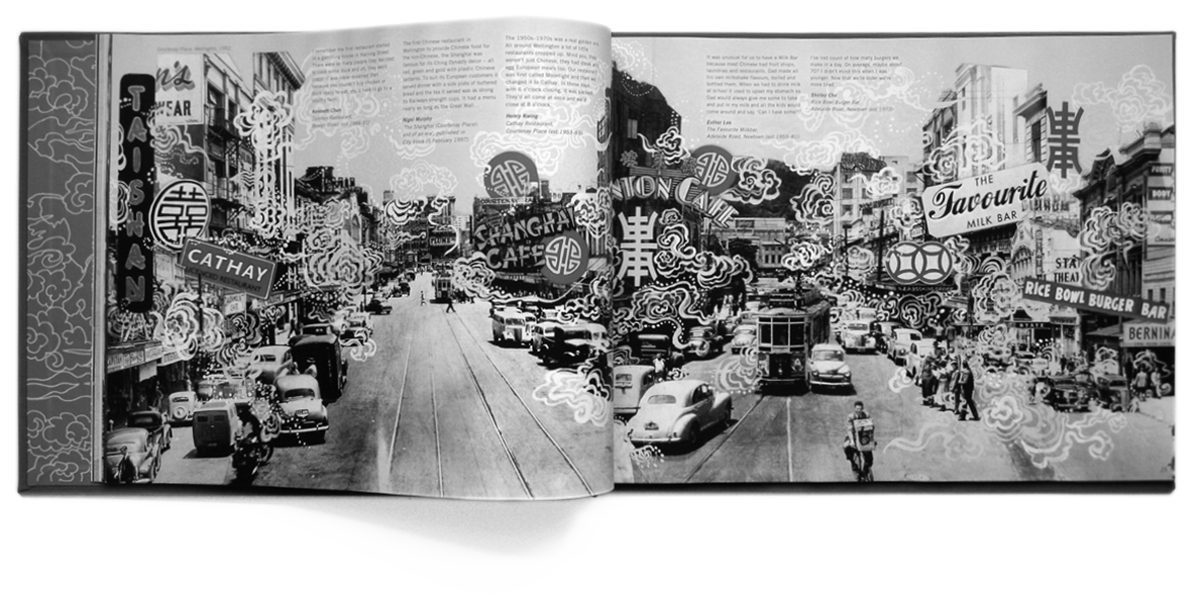
In Kerry Ann Lee's Restaurants, street signs from Wellington's old Chinese restaurants are layered over archival photographs of Courtenay Place, the city's nightlife district and a historic centre of the Chinese community. The effect is reminiscent of the film noir device where neon signs float across the screen to evoke a smoky, enigmatic mise-en-scène. But Lee is not seeking to radically or artificially reshape Wellington as an 'exotic' Chinatown. Nor is she joking at the restaurants' expense by framing them as inauthentic (though the sign graphics strongly evoke the particular New Zealand-style 'Chinese cuisine' of the 1950s and 1960s: viz. Egg Foo Young served up with a side plate of white bread).
Rather, Lee is concerned with exposing the kinds of on-the-ground tactical compromises made by any minority community as it negotiates its own space within a homogenous majoritarian society. She is celebrating the popularisation of Chinese restaurants as an important moment in the assertion of Chinese identity within New Zealand's social and cultural life. In this way, Restaurants challenges assumptions about the loss of cultural authenticity and takes a refreshingly considered approach toward cultural exchanges that are too often cringingly disregarded, or dismissed as inconsequential.
Restaurants is part of a series called Home Made, which was originally published together as a short-run illustrative book. The works in Home Made foreground the voices and experiences of the New Zealand Chinese community since the nineteenth century, recording its longevity and seeking to reaffirm its position in New Zealand's national story.
Far from being polemic, the works convey a sense of immediacy and intimacy. Much of the source material for Lee's work (postcards, newspaper clippings, product packaging, cookbooks, even, in Lucky Duck, her grandmother's wallpaper) are 'found materials of personal significance', sourced from her family home. In its use of personal narrative, Home Made echoes the practice of many nineteenth century settlers, who kept books of letters, photographs, and other reminders of family and home. In a sense, Home Made comprises two interrelated autobiographies: that of a migrant community, and that of the artist herself.
* * *
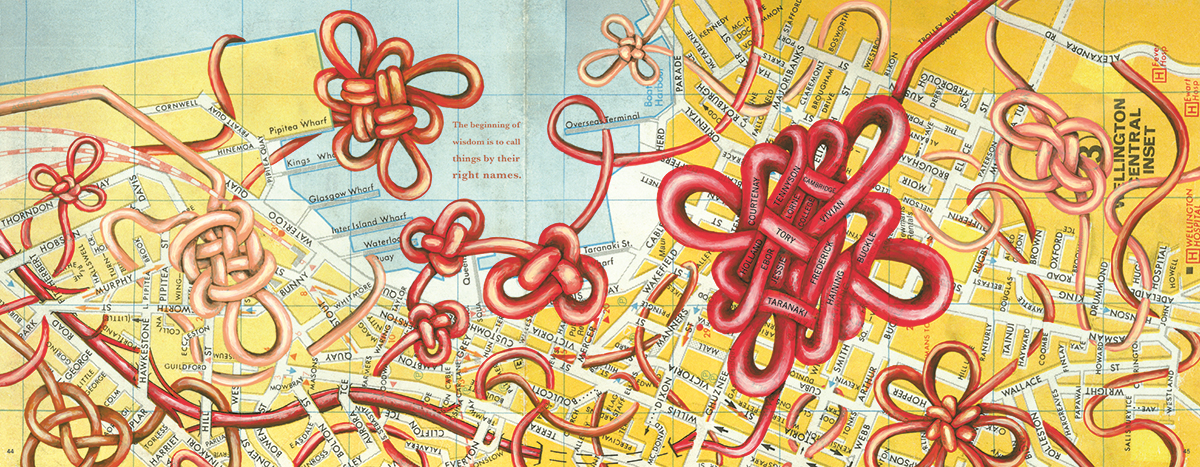
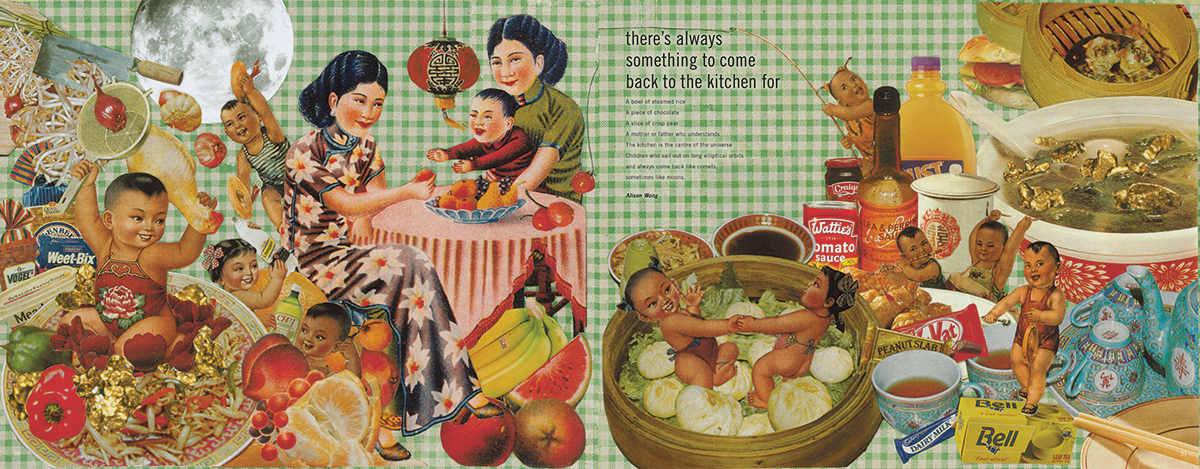
Lee's use of collage is critical to the Home Made project. Collage is the perfect visual medium for autobiography. It is highly accessible, because it requires little equipment or materials other than the domestic printed ephemera, the 'archaeology of contemporary culture', that already constantly surrounds us. Further, because collage tends to create meaning in densely associative rather than strictly narrative ways, it's a good fit for the idiosyncratic, non-linear way that most people live their lives.
Raw and technologically uncomplicated, yet capable of considerable nuance and conceptual sophistication, collage has been a key strategy in underground publishing since the counterculture's 1960s heyday. This constitutes a second autobiographical dimension to Lee's use of collage: as the self-made impresario behind independent Red Letter Zine Distro and author-publisher of many of her own zines, Lee has a strong personal association with self-publishing and DIY and punk culture.
However, the connections between Lee's political aims and the zine culture run deeper than the use of collage and other lo-fi paper-based techniques. Home Made implicitly critiques established views of New Zealand's narrative identity, often co-opting visual artifacts from that narrative to do so. In the tradition of underground press, Lee uses collage to turn the language of the dominant culture against itself, and to challenge its power. Both Pioneers and Blue Willow Landscape, for example, layer Chinese scenes and historical figures over landscape imagery, apparently connecting the Chinese community with the land, the ultimate arbiter of 'belonging'. But the source images for the backgrounds in these works are highly romanticised European representations of landscape, and the over-painting in Blue Willow Landscape is based on the eponymous plate design, widely used in early colonial times, showing an exotic 'Oriental' scene as imagined by the English artist who created it.
These details suggest that the works can be read as commentaries on a white settler society, itself with still only a tenuous connection to the land, which excluded and stereotyped the 'Other'. In Chinatown, Wellington, Lee weaves the silk cords used in the folk art of knotting through an old Wellington street map, centering on the historic Chinese quarter around Haining Street. With wry irony, the cords recall the tentacles of the Yellow Peril Octopus from a well-known populist-racist cartoon published by the New Zealand Truth in 1907.
Elsewhere, the works uncover happier connections between Chinese and 'mainstream' New Zealand cultures. In Charms, Golden Kiwi lottery tickets become raw material for traditional Chinese paper-cut charms meant to bring about, variously, a surplus of wealth, prosperity, or long life. Dream of the Skyland imagines New Zealand as a land of gold and clouds, which represent good fortune in traditional Chinese landscape painting.
Given her intent to overturn accepted narratives and reestablish the Chinese community's presence in New Zealand history, Lee's use of lo-fi illustrative techniques from the world of zines is particularly apt: zines have always been a forum to tell stories from the fringe, often highly personal, or subversive, or both. Lee herself has described the Home Made works as 'alternative cultural histories'. Her deployment of elements of mainstream New Zealand's visual identity corresponds with Deleuze and Guattari's concept of 'minor literature', a critical language which subverts, while operating within the boundaries of, a dominant culture.
* * *
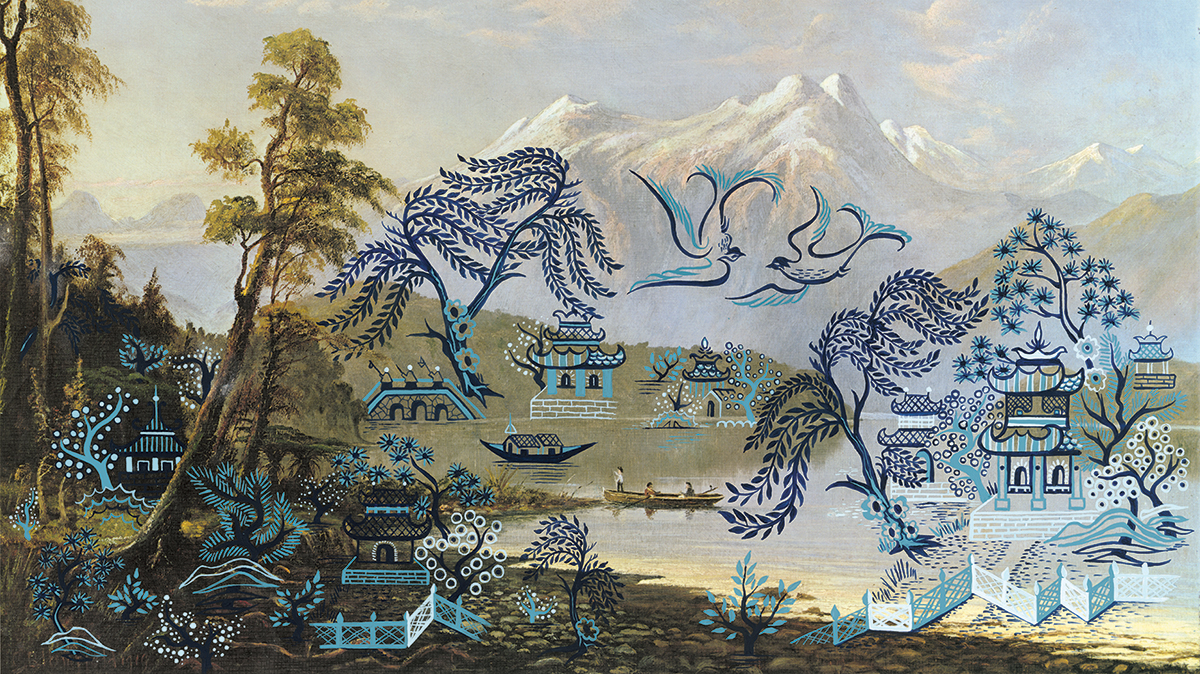
Lee's use of collage and paper techniques has one more resonance which is important to mention. Her distinctly personal approach also reveals an unlikely connection between the underground zine movement and traditional Chinese folk arts. The same qualities that make paper an attractive medium for contemporary zine producers (chiefly its versatility and cheapness), also make it a material of choice in Chinese homes, where paper-cut charms are used to celebrate festivals and holidays, births, deaths, and marriages.
The success of Lee's work, both in terms of her aesthetic accomplishment and political persuasiveness, can be measured by the myriad of connections her work suggests, and by the seamlessness with which she combines her constituent materials. Lee's 'integration' of diverse visual artistic traditions and source materials is not only elegant, but ultimately optimistic: a practical demonstration of the rich potential of synthesis and hybridity. Her works look forward to a post-'model minority, post-'Asian Invasion' future where Chinese New Zealand identity is forged based on awareness, confidence, and pride in difference.
